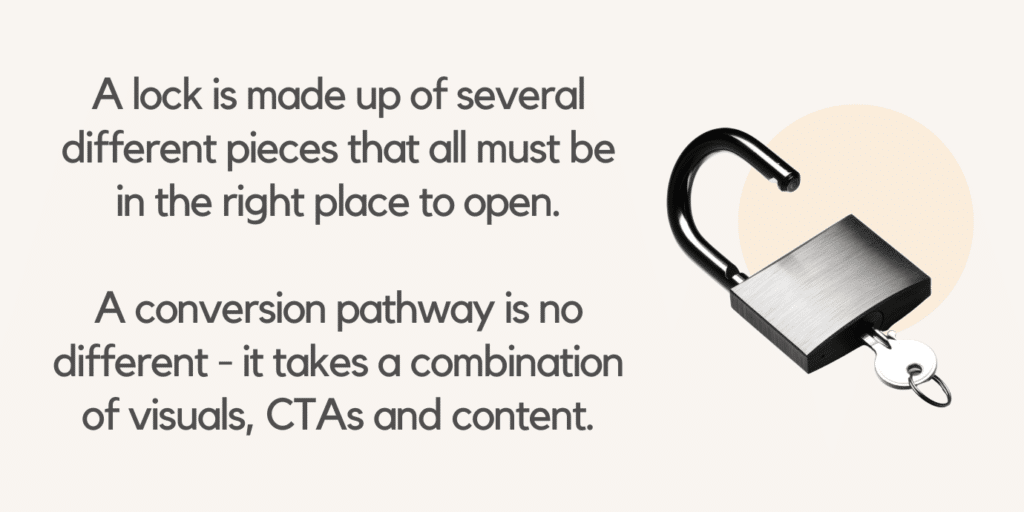Conversion rate optimisation is where the statistical and psychological aspects of marketing meet in tandem, responding to behaviour on webpages and ensuring there are no technical snags leaving users with poor experiences. You can’t focus on just one area as a perspective, considering all aspects of copy, graphic and web design is the best way forward. Our 5 most important things to remember when looking to optimise your customer journey are:
Contents
Grab Your Tools.
No spanners, here – easy-to-install plugins for your website such as Hotjar and MS Clarity can provide excellent insight into user behaviour. There is no better way to begin to understand your customer journey than to see it.
These plugins allow you to replay users’ sessions. See where users are clicking, getting stuck, and dropping out, as well as other features such as heat maps. This feature allows you to see where on any page users as a percentage are scrolling to. This can alert you to things like parts of the page needing to be brought higher up to be more in view.
Go Through the Journey Yourself.
To put it into a cliche, you have to walk in your customers’ shoes. Regularly testing the customer journey yourself – especially conversion points – is vital to understand where you may be falling short. It’s important to even go through forms and other data entry points – but remember to use a plugin or test tool to mark this traffic as tests, or alternatively mark it clearly on the data entered.
Focus On Trust.
This is a key aspect of nurturing conversions, but it has more facets than you might think. Showcasing customer reviews and testimonials with real images or trusted logos is an ideal example of what we’re talking about. It nurtures credibility and showcases clear benefits of products and services.
The hidden aspect here is visuals. Think if you were to go looking for something online and the page you were presented with hadn’t changed a line of code since ‘99. You would recoil in horror – that’s the feeling we want to avoid. High-quality, concise and appropriate imagery across a website is one of the biggest factors in whether or not a user will convert.
It All Comes Down to the CTA.
Calls to action must draw the eye, but not steal the show. Too big or garish and it looks spammy, too small and plain it’s lost amongst the other content. Balancing the copy and design of your CTAs is essential if you want to maximise engagements.
When it comes to evaluating the performance of different calls to action, you don’t have to be confined to one. There are a number of tools and plugins which allow you to A/B test different versions of the same webpage at the same URL. This is not only a great way to understand which messaging works best with your audience, but can also be used to test any other tweaks to other parts of your website.
Don’t Take Your Eyes Off the Path.
When you look at your website now it is no longer text, images, videos or buttons; it is a series of decisions. Why is that here? Are we repeating ourselves? It’s a lot to keep on top of. You need to zoom out and take control.
It’s time to create a wireframe – this is essentially a blueprint of your page that can be created in any way you choose. Pen and paper if you’re feeling old-school, but free platforms such as Figma offer easy templates that make the process easier and sharable with other members of your team. Before committing to building tests, wireframes are an essential ‘sketch’ that allows you to plot where everything sits. Remember – ‘why?’, and get building!
Keep It Simple.
This piece of advice comes straight from our experience – many times we see clients seeking to fit lots of information in before they get to their hook, and requiring users to hand over a lot of information in order to register interest. It’s important to inform your users and qualify your leads, but as always there is a balance. Keep your hook above the fold (where the page is visible before you have to scroll) and try to only ask a few brief questions in your forms. For the latter, there may be more work required to qualify the leads coming through, but it is always preferable to losing both viable and unviable leads because you are demanding too much information too early on.
With these as a first-step checklist, it is more than possible to grasp the art of CRO yourself and begin to make customer-centric improvements to your websites. Happy optimising!







